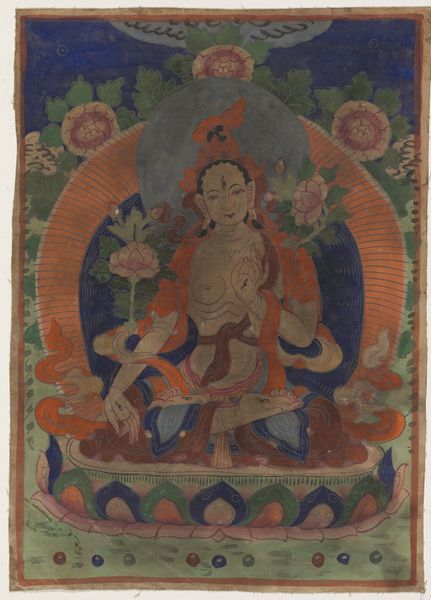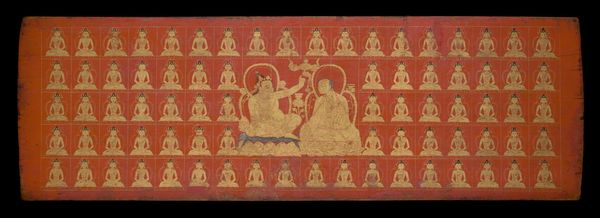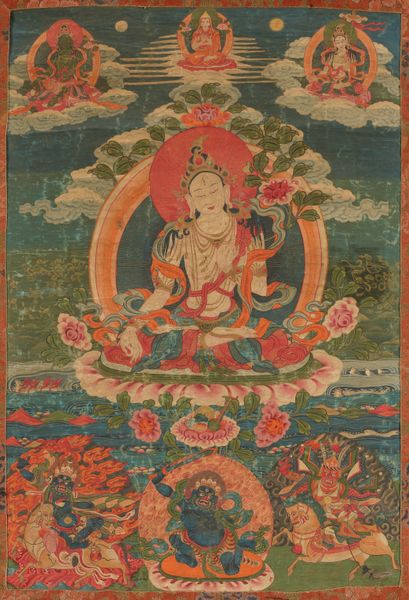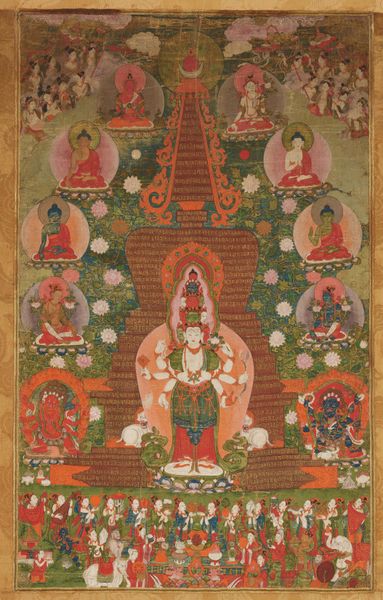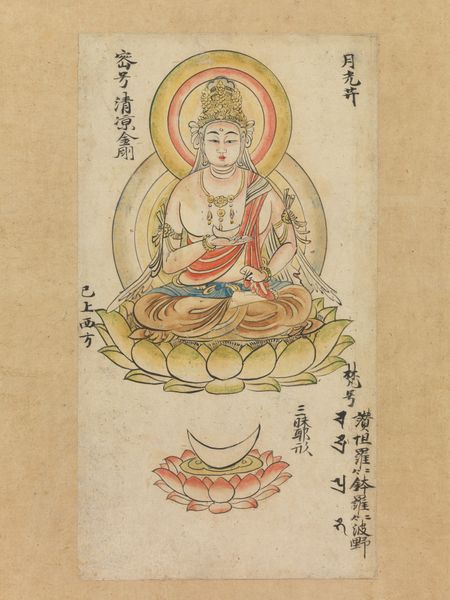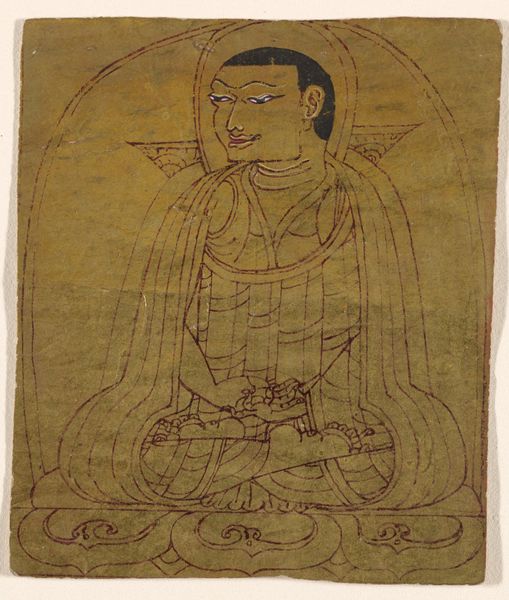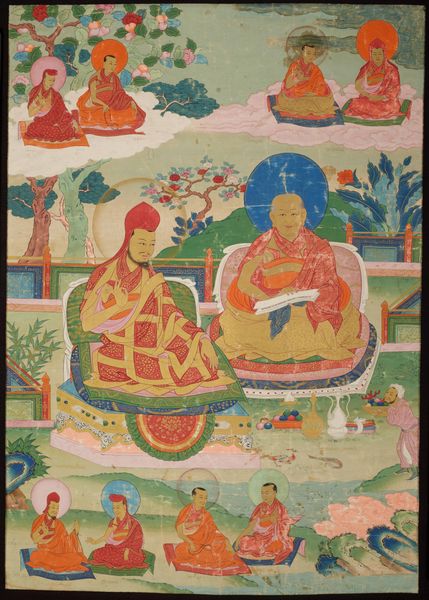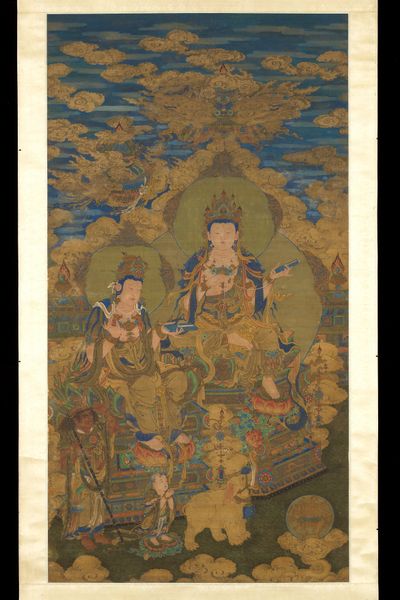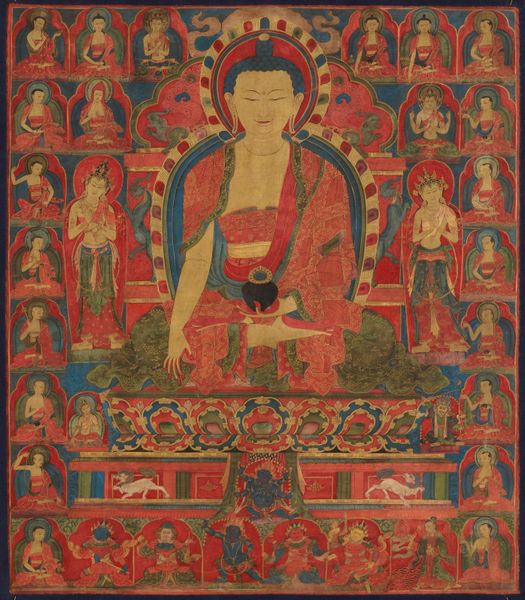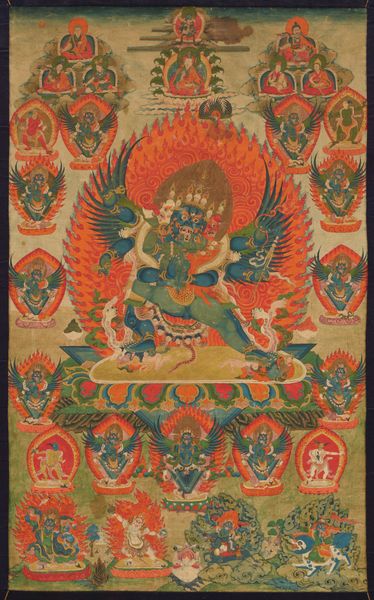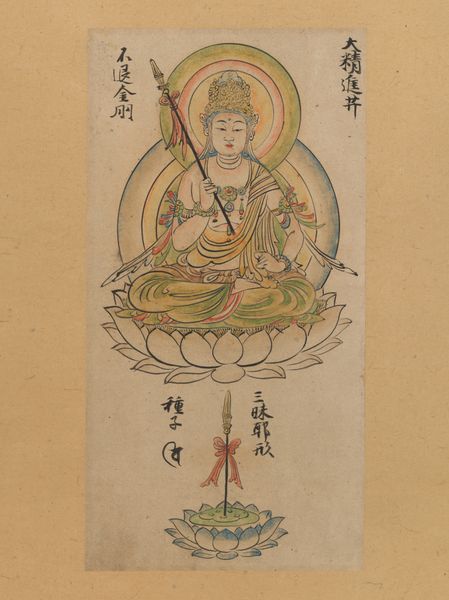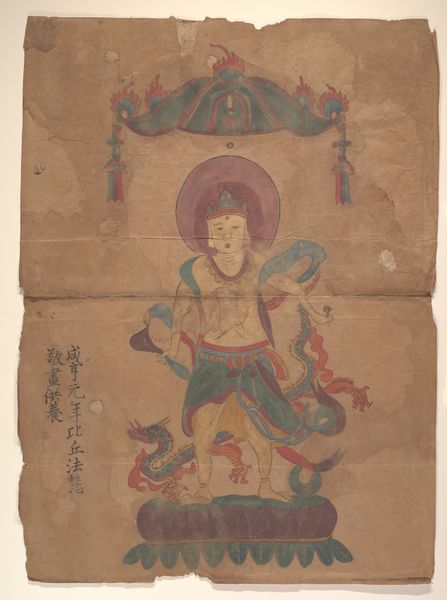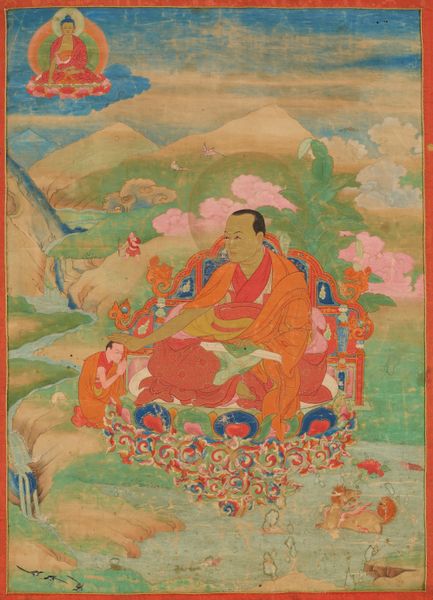
Title Page from a Buddhist Manuscript c. late 18th century
0:00
0:00
tempera, painting
#
tempera
#
painting
#
asian-art
#
geometric
#
decorative-art
#
decorative art
#
miniature
#
calligraphy
Dimensions: 6 x 25 1/4 x 1/2 in. (15.24 x 64.14 x 1.27 cm)
Copyright: Public Domain
Editor: Here we have a Title Page from a Buddhist Manuscript, created around the late 18th century. It looks like it's tempera on some sort of textile, a painting functioning as decorative art. The geometric patterns framing the piece give it an almost quilt-like feel. How do you interpret this work? Curator: The materiality here is key. The use of tempera, the surface it's applied to, and the presence of calligraphy all speak to a specific context of production and consumption. Who was making this? What kind of labor was involved in preparing the pigments, the writing? Think about the economic and social systems that enabled its creation. Was this for personal devotion, or was it commissioned? Editor: That's a great point. The intense detail suggests a lot of skilled labor. The calligraphy also implies a level of education and literacy on the part of either the creator or the intended audience. Curator: Exactly! It challenges the typical high art/low craft binary. Is the geometric design "merely" decorative, or is it integral to the manuscript's purpose and meaning? How does the visual language of geometry interact with the symbolic language of the calligraphy and representational images? How were those textile borders created? Were they created specifically for the book, or re-purposed? These elements speak to a culture valuing both spiritual content and aesthetic form. Editor: So, the value isn’t just in the religious text, but in the materials and the process of making the manuscript itself. That gives the whole piece a deeper meaning. Curator: Precisely. Considering the "how" and "why" of its creation illuminates the social and cultural currents surrounding it.
